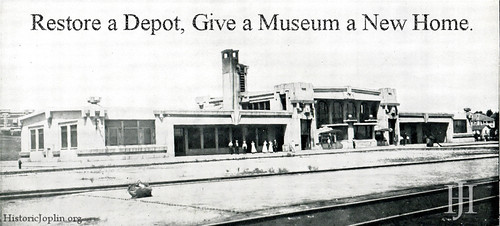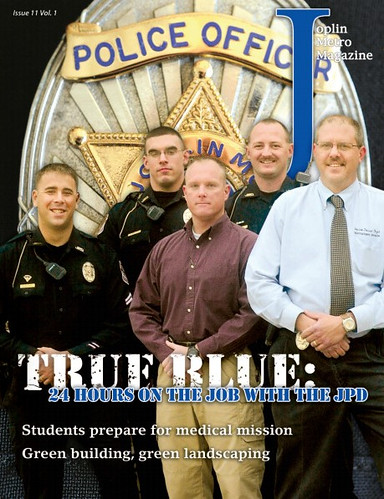
The Riverside Inn, Elks Spring, Missouri
As the spring and summer months approach, we think back to days when Joplinites fled the city for a few leisurely days spent alongside a cool, clear Ozark stream. Outsiders had started flocking to the Ozarks early on, as documented in Lynn Morrow and Linda Phinney Myers’ book Shepherd of the Hills Country Tourism Transforms the Ozarks, 1880s—1930s. But while many from St. Louis and Kansas City traveled to the Shepherd of the Hills and Arcadia areas of the Ozarks, Joplinites had their own oasis just down the road.
McDonald County, home to Indian Creek, Elk River, and the Little and Big Sugar rivers, became a popular destination for Joplin residents seeking relief from the heat of spring and summer. One of the most popular resort destinations was W.H. Fleming’s Riverside Inn located at Elk Springs, Missouri, forty-five miles south of Joplin. The inn was established circa 1905 and offered rooms for $1.50 a day or $9.50 a week.
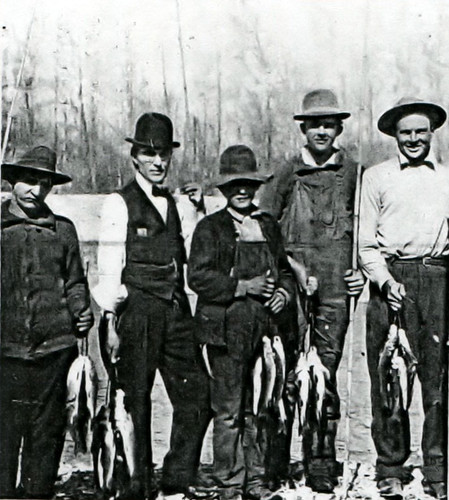
Guests with recent catches
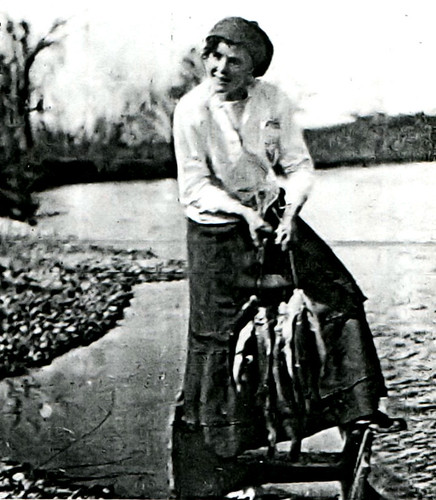
A lady and her fish
Guests could expect a tastefully appointed inn and rustic cottages awaiting their arrival after stepping off of a train from the Kansas City Southern Railway. Fishing, boating, and bathing in Elk river were among the activities that guests could enjoy while at the resort. The more adventurous would find “surrounding mountains covered with heavy timber” which afforded “plenty of opportunity for exploring parties, and a number of caves” that were within a half hour’s walk from the inn.
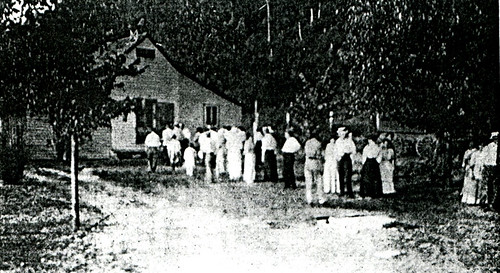
Dinner time at the inn.
The inn was also known for its delicious fried chicken as one guest, W.E. Nesom of Shreveport, Louisiana, wrote the following poem to commemorate a meal:
“A Chant of Friend Chicken
If you are of that jolly bunch
Which loves a gastronomic hunch,
Just saunter down Missouri way
And place your money for a way
With proper show of honest pride
On yellow-legged chicken fried
At Fleming’s Inn at Riverside
You may affect the flash café,
Where night usurps the place of day;
Where one if flouted if he dines
Without the aid of vintage wines —
But, tell me, have you ever tried
A yellow-legged chicken fried
The way it’s done at Riverside?
You may, with tourist’s license, boast
Of clam-bakes on the Eastern coast,
Or dwell on some outlandish dinner
They stung you for in old Vienna-
Soft pedal, brother, till you’ve tried
A yellow-legged chicken fried
The way it’s done at Riverside
If, in punning sense, you know
The “chickens” of the summer show,
And oft at Johnnies’ door have met them,
The quickest way to quite forget them
Will be, to take a little ride
And sample sure ‘enough chicken fried
At Fleming’s Inn at Riverside
Without, a crust that’s golden, dreamy;
Within, a flesh that’s tender, creamy;
Then, add a certain juicy sweetness
To bring the picture to completeness
The Ozarks’ boast, Missouri’s pride
A yellow-legged chicken fried
At Fleming’s Inn at Riverside.”
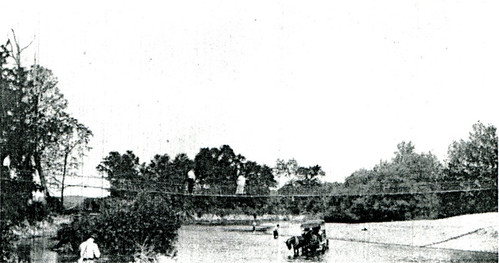
A view of the river below the inn.
All one had to do is catch a train headed south from Joplin and soon find themselves in the midst of an Ozark oasis. Years later the inn burned down, but for a brief period it offered a respite from the ills of city life for many a Joplinite.
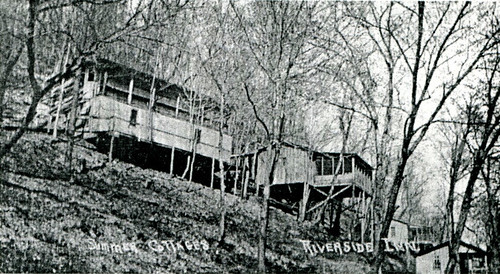
Cottages at the inn.
For those interested, the Riverside was located three miles west of Pineville on what is today Highway H.
